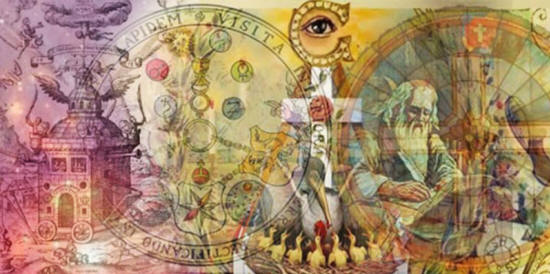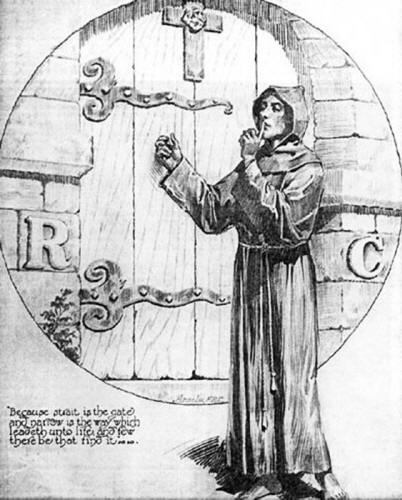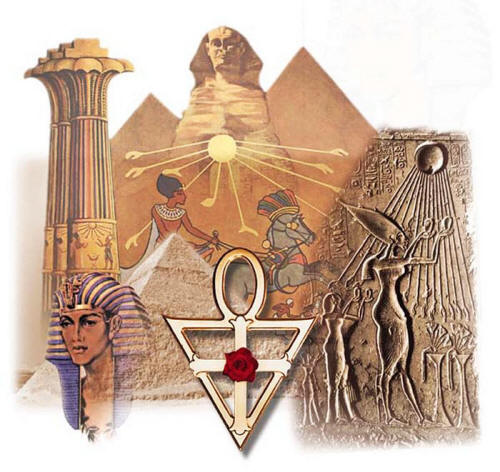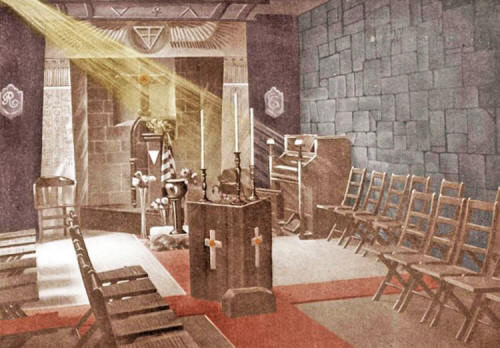|
Why did this society conceal its identity under various names? Who was the mysterious author of the Order's manifestos?
Who was Christian Rosenkreutz?
when they learned about the
Order's existence?
The ancient history of the Rosicrucians
can be traced back to the mystery schools of ancient Egypt.
The Emergence of The
Rosicrucian Order in Europe
...says Charles Mackay, author of the book Extraordinary Popular Delusions and the Madness of Crowds.
It was also believed the brotherhood's
members took delight in cheating and tormenting unhappy citizens,
especially those who had sinned against the laws of morality. Who Was The Author of The Manifestos?
It was not the first time Europeans heard of this secret society.
A few years earlier, the Order had already published three manifestos, The manifestos were published in 1640, 1615 and 1616 respectively. The first two manifestos were published anonymously.
There is speculation that Francis Bacon was the author, however, the manifestos have historically been attributed to Johann Valentin Andreae who was a German theologian, Lutheran minister and Grand Master of the Prieuré de Sion from 1637-1654.
Was The Brotherhood of The Rose Cross a Threat to Christianity and The Church?
It did not take long before people began wondering if this new secret society posed a threat to Christianity and the Church.
The Rosicrusians' manifestos, the Fama Fraternitatis, the Confessio Fraternitatis were filled with references to the Kabbalah, Hermeticism, Alchemy, but also Christianity.
It is important to keep in mind that although the Brotherhood of the Rose Cross was unknown to most people in the 15th century, Rosicrucianism itself was "no new thing".
The Order's teachings were a only a revival of still earlier forms of Initiation, and the Order was a lineal descendant of,
The traditional origins of the Rosicrucians go back to the mystery schools of ancient Egypt.
In these schools, enlightened mystics gathered together to study the mysteries of the universe, nature, and humanity.
This was the reason they were later called "mystery schools".
Ancient History Of The Rosicrusian Order - Preserving Secret Ancient Knowledge
According to Harvey Spencer Lewis (1883-1939), the founder of the Ancient and Mystical Order Rosae Crusis (AMORC) in the United States, Rosicrucianism dates back to 1489 B.C when a group of male and female mystic scholars, studying under Pharaoh Thutmose III decided to make their order secret, calling it simply the order or brotherhood.
The Rosicrusians can be traced to ancient Egyptian mystery schools.
The order prospered and succeeding pharaohs continued as Grand Masters through Amenhotep IV, great-great-grandson of Thutmose III.
Amenhotep IV was an extraordinary and courageous pharaoh who was unfortunately born ahead of his time (1388 B.C.-1350B.C.).
Amenhotep IV was much too controversial in the eyes of the ancient Egyptians. He rejected the worship of the old gods and the principal deity Amon and established one supreme deity.
This was unacceptable to the ancient Egyptians who at the time worshiped a number of different gods, and as a result Amenhotep IV made enemies of the priests.
However, this brave pharaoh was not very concerned with public opinion and ancient traditions.
He changed his name to Akhnaton, meaning "glory to Aton", the sub-symbol of the one true God. His previous name Amenhotep meant "Amon is satisfied". Akhnaton continued to challenge and question the old Egyptian traditions and religion.
He moved the capital city from Thebes, which was sacred to Amon, to a place called Khut-en-Aton, also known as El Amarna.
There, shaped like a cross, he built a temple for the Brotherhood.
The Temple of the Rose Cross, Teophilus Schweighardt Constantiens, 1618.
During the reign of Akhnaton the Rosicrucians could practice their teachings in peace, but everything ended when the pharaoh died.
Shortly after the death of Akhnaton, Amon-Ra was reinstated as the chief god and the brotherhood fled to the temple of El Amarna. The members of the Order lived in isolation and for the next several centuries they concentrated on preserving the sacred truths of Akhnaton.
Secret knowledge was passed down to worthy students.
Prominent figures like,
...all studied under the Rosicrucians.
It is believed that after the death of Pharaoh Akhnaton, the legendary Hermes Trismegistus served as a Grand Master.
Christian Rosenkreuz Founded The Rosicrucian Order
The identity of Christian Rosenkreuz still remains shrouded in mystery, but according to three Rosicrucian Manifestos, the Rosicrucian Order was founded by Christian Rosenkreuz, a German noble of the 14th century.
Christian Rosenkreuz was a doctor who discovered and learned esoteric wisdom on a pilgrimage to the Middle East among Turkish, Arab and Persian sages, possibly Sufi or Zoroastrian masters.
After a long travel in the East, Rosenkreuz founded the Brotherhood on his return.
In his essay on "Rosicrucians and Freemasons" Thomas de Quincy wrote:
Christian Rosenkreuz's Death and Mysterious Grave
There is very little information about Christian Rosenkreutz's death. It is believed he died at the age of a hundred years. His death was known to the Society, but not his grave.
It was common practice of the first Rosicrucians to conceal their burial places even from each other.
First AMORC Lodge New York 1915 Image credit: Amorc
It is described that his body was discovered by a Brother of the Order, in a perfect state of preservation, 120 years after his death which occurred in absolute secrecy, as Rosenkreuz had predicted, in a heptagonal chamber erected by himself as a storehouse of knowledge.
The vault was a heptagon. Every side was five feet broad and eight feet high. It was illuminated by an artificial sun.
In the centre was placed, instead of a grave-stone, a circular altar with a little plate of brass, whereon these words were inscribed:
About the margin was:
The identity of Christian Rosenkreuz is still unknown. Some say he have existed others are convinced he was a real person.
In the center were four figures enclosed in a circle by the revolving legend:
Each of the seven sides of the vault had a door opening into a chest. Inside the vault were secret books of the order and the Vocabularium of Paracelsus.
There were also mirrors, small bells, burning lamps, marvelous mechanisms of music, etc., all so contrived that, after the lapse of many centuries, if the whole order should have perished, it might be re-established by means of this vault.
The true identity of Christian Rosenkreutz still remains a controversial subject. Some scholars maintain the legendary founder of the Rosy Cross never existed.
However, many are convinced that stories of Rosenkreutz are entirely true...
|








